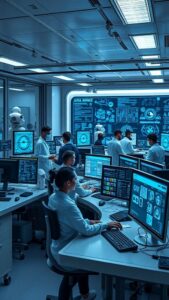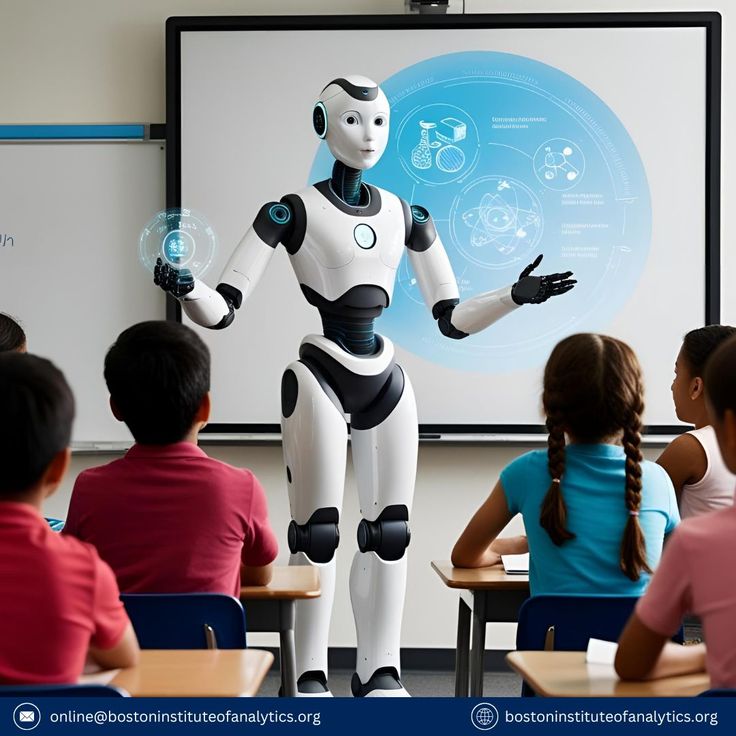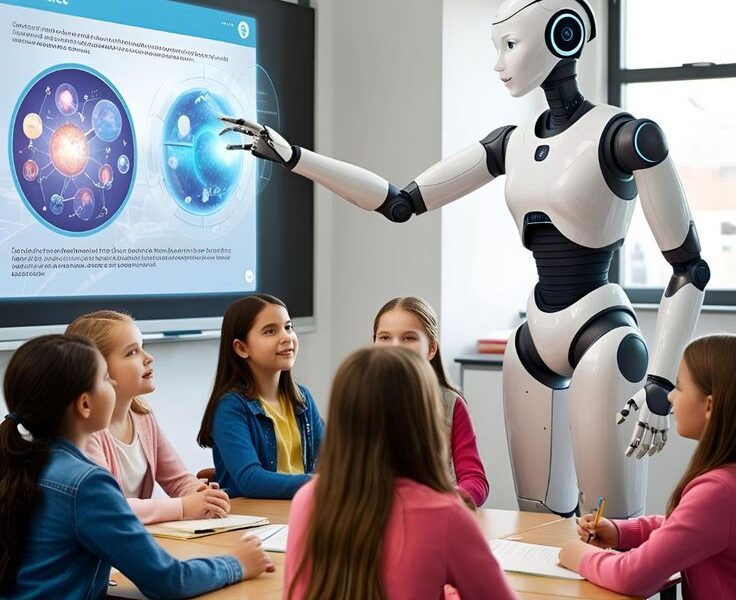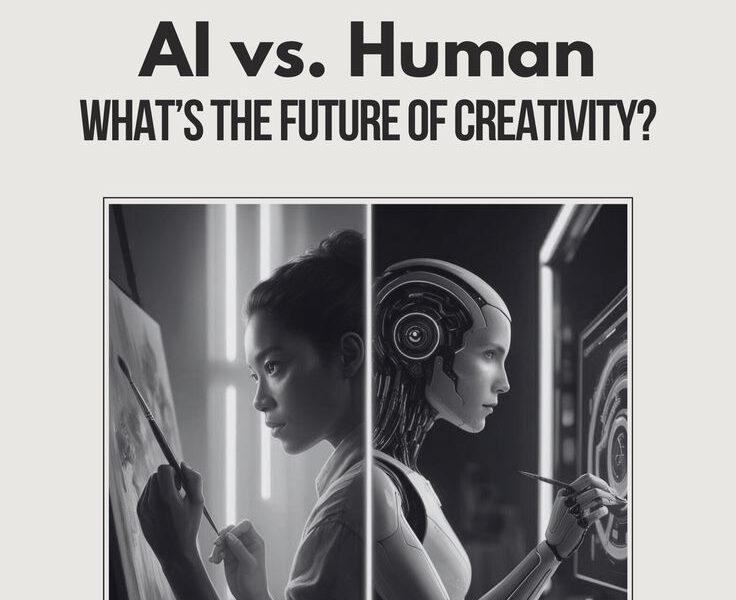**🤖 The Silent Revolution: AI’s Integration into Robotics**
Artificial intelligence has sparked a silent revolution in the field of robotics that is transforming every aspect of our daily lives. This revolution is advancing so quietly that the average person may not even realize it, yet its effects can be felt across every sector of our lives. Modern robots, which once could only follow programmed instructions, now possess the ability to learn independently, make decisions, and solve complex problems thanks to artificial intelligence. This transformation is not only visible in industrial sectors but is also making significant impacts in household use, healthcare, education, and entertainment. AI has endowed robots with the insight to understand their environment, analyze human emotions, and provide appropriate responses. Thanks to deep learning algorithms, robots can now not only recognize objects but also understand the relationships between them. Advances in computer vision have given robots vision capabilities superior to the human eye. Natural language processing has opened new doors of communication between humans and machines. Through reinforcement learning, robots are learning from their experiences and continuously improving their performance. All these developments together are creating a world where humans and machines work together, enhance each other’s capabilities, and collaborate to improve life. This silent revolution is transforming every aspect of our economy, society, and culture, leading us toward a future where human-machine collaboration will be the fundamental source of our progress.

**🏭 Industrial Transformation: The Rise of AI-Powered Factories**
The integration of artificial intelligence and robotics in the industrial sector has initiated a new industrial revolution termed Industry 4.0. This transformation is not limited to mere automation of machines but has converted the entire production process into an integrated, intelligent, and autonomous system. In modern factories, AI-equipped robots not only work rapidly but also demonstrate exceptional precision in quality standards. Through predictive maintenance, these systems can detect machine faults in advance and arrange repairs, reducing disruptions in the production process. Computer vision systems have revolutionized quality control processes, capable of detecting defects invisible to the human eye. The use of AI in supply chain management has established better balance between production and demand. Collaborative robots or “cobots” have enabled safe cooperation between humans and machines. The concept of digital twins has created virtual models of factories that can analyze performance in real-time. The use of AI in energy management has reduced energy waste. All these developments together are making the industrial sector more efficient, flexible, and sustainable. For industrialists, this transformation is not only a means of reducing production costs but has also enabled them to compete in global markets. In the coming years, we will see even more intelligent factories that will be fully automated and operate with minimal human assistance.
**🏥 Medical Miracles: The Role of AI in Healthcare**
The use of artificial intelligence and robotics in healthcare has brought revolutionary changes to treatment methods. Surgical robots have made complex operations possible that were difficult to perform with human hands. These robots not only perform surgeries with greater precision but also reduce patients’ recovery time. The use of AI in diagnostic imaging has made it easier to detect diseases at early stages. AI algorithms can analyze X-rays, MRIs, and CT scans to identify symptoms not visible to human eyes. In drug discovery, AI has accelerated the research and development process of medicines. Virtual nursing assistants have transformed patient monitoring and care methods. Healthcare services are being provided to remote areas through telemedicine. Robotic prosthetics have made mobility easier for people with disabilities. The use of AI in mental healthcare has expanded access to mental health services. In elderly care, robots have established new standards for senior care. All these developments together are making healthcare more efficient, accessible, and patient-centered. In the coming years, we will see even more progress as AI and robotics together introduce new methods for disease prevention, diagnosis, and treatment.
**🚗 Intelligent Transportation: The AI-Driven Automotive Industry**
The use of artificial intelligence and robotics in transportation has transformed vehicle design, production, and operation methods. Autonomous vehicles have now become a reality, using AI algorithms, sensors, and cameras to understand their environment and make real-time decisions. These vehicles not only reduce accidents but are also helping improve traffic flow and increase fuel efficiency. Smart traffic management systems have changed urban transportation management methods. Autonomous delivery vehicles have revolutionized the logistics and delivery sector. Through predictive maintenance, vehicles can be repaired before they break down. Connected cars have enabled communication between vehicles. The use of AI in electric vehicles has improved battery performance. Ride-sharing platforms have transformed urban transportation methods. All these developments together are making transportation safer, more efficient, and sustainable. In the coming years, we may see fully automated urban transportation systems where vehicles communicate with each other to improve traffic flow.
**🏠 Smart Homes: AI’s Entry into Daily Life**
**🏠 Smart Homes: AI’s Entry into Daily Life**
The use of artificial intelligence and robotics in home life has radically changed living patterns. Smart home devices have created an intelligent environment by interconnecting household appliances. Voice-activated assistants have made it possible to control household tasks through voice commands. Robotic vacuum cleaners have transformed home cleaning methods. Smart thermostats have improved energy usage. Home security systems have elevated home safety standards to new heights. Smart kitchen appliances have revolutionized cooking methods. Elderly monitoring systems have made senior care easier. Home entertainment systems have enhanced entertainment experiences. Energy management systems have enabled savings in household energy consumption. All these developments together are making home life more comfortable, secure, and efficient. In the coming years, we will see even more integrated and intelligent homes that will be fully automated and require minimal human assistance.
**🛒 Retail Revolution: AI-Powered Shopping**
The use of artificial intelligence and robotics in the retail industry has completely transformed the shopping experience. Automated checkout systems have made the shopping process faster and easier. Inventory management robots have changed stock management methods. Personalized recommendations have improved customer experience. Supply chain optimization has made product delivery processes more efficient. Customer service chatbots have transformed interaction methods with customers. Virtual try-on solutions have enhanced online shopping experiences. Smart shelves have automated stock level monitoring. Predictive analytics have made accurate demand forecasting possible. Last-mile delivery robots have simplified the final delivery stage. All these developments together are making the retail industry more efficient, customer-friendly, and competitive. In the coming years, we will see even more intelligent retail stores that will be fully automated.
**🌾 Agricultural Transformation: AI-Powered Farming**
The use of artificial intelligence and robotics in agriculture has brought revolutionary changes to farming methods. Precision farming has transformed crop cultivation methods. Autonomous tractors have automated farming processes. Drone technology has changed crop monitoring methods. Smart irrigation systems have improved water usage. Crop monitoring systems have enhanced methods for detecting diseases and pest attacks. Harvest robots have simplified crop harvesting processes. Soil monitoring sensors have made soil quality monitoring possible. Livestock monitoring systems have improved animal care methods. Supply chain optimization has made agricultural product delivery more efficient. All these developments together are making agriculture more productive, sustainable, and efficient. In the coming years, we will see even more intelligent farming systems that will radically transform food production and distribution methods.
**🎓 Educational Transformation: AI-Powered Education**
The use of artificial intelligence and robotics in education has transformed teaching and learning methods. Personalised learning systems have provided customised educational content for each student. Intelligent tutoring systems have given students individual attention. Educational robots have made learning experiences interactive. Automated assessment systems have made evaluation processes accurate and fair. Virtual classrooms have expanded access to education. Adaptive learning platforms have provided educational material according to students’ capabilities. Language learning applications have made language learning methods easier. Special education tools have made education accessible for students with special needs. Research assistance systems have accelerated the research process. All these developments together are making education more effective, personalised, and accessible. In the coming years, we will see even more intelligent educational systems capable of meeting each student’s individual needs.


